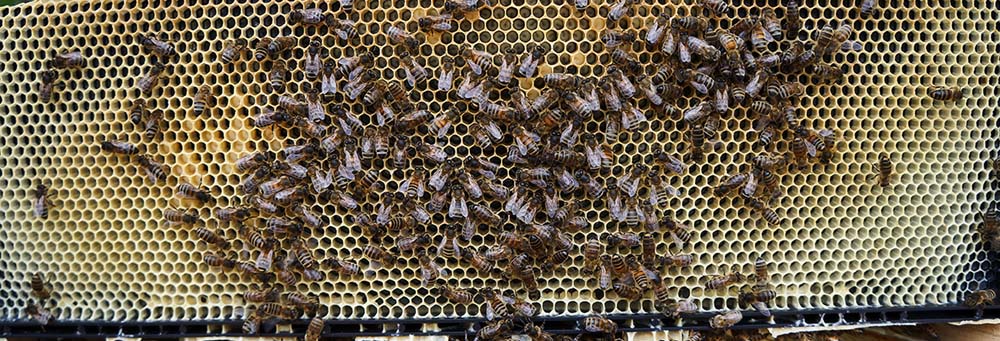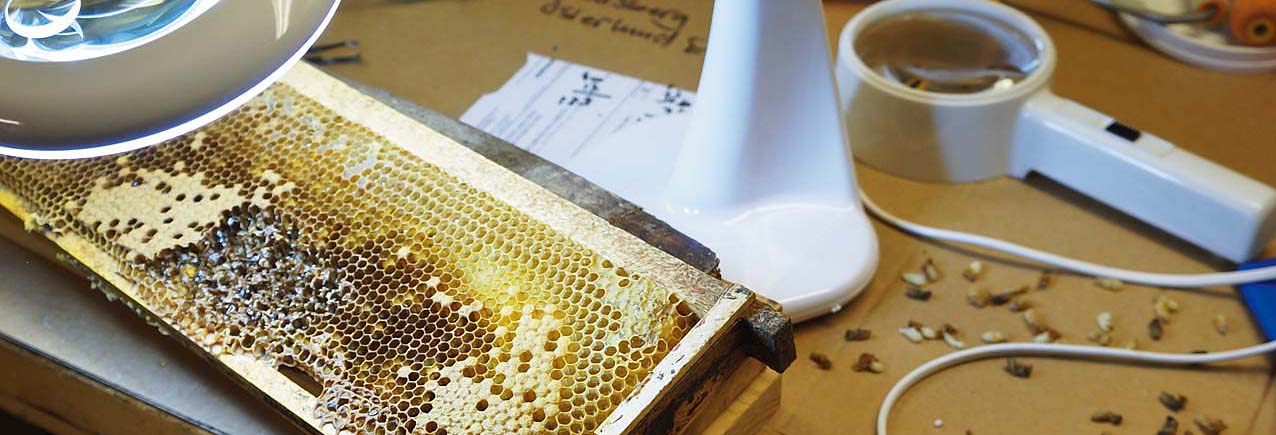It’s been a very busy time for some time now. From about August 5 to August 25 all supers above queen excluder are harvested and honey extracted, the third removal for the season. Those colonies showing wingless bees on the
Prepared for winter


It’s been a very busy time for some time now. From about August 5 to August 25 all supers above queen excluder are harvested and honey extracted, the third removal for the season. Those colonies showing wingless bees on the

One of the most important parts in my management system has become a simple thin hardboard in front of the entrance. The first thing I do when I come to an apiary is going reading them. They give a lot
Last year my friend had a call in July about a swarm that had come from a big old tree. The cavity couldn’t bee very big. And the swarm was not big. http://www.elgon.es/diary/?p=235 But the bees in the tree survived the

Five days after I hived the swarm from the wall I checked it. I placed it about three km from the wall where it originated, to help form the ”stock of the region”. It wasn’t a very big swarm, but

Colony 47 is a remarkable colony. It started as a walkaway split last year. From colony 236. It is placed in apiary 4 as colony no 7. The split was moved from apiary 23 to apiary 4. When I checked

You remember the previous post about the “multiple test”(MT)-colony, natural positioning, plastic frames, a mouse (or mice), mild winter and what a good condition this colony came out with now in spring. I’ve been thinking about it. Mild winter Yes
Larry Garret uses the powdered sugar shaker method to count mites. The method works well for his smaller number of colonies at each apiary and the tools are very easy to transport and store. Although there may be a slight

Yes, do struggle for resistant bees. Don’t just talk about it! Or say an easy no, it’s impossible, or an easy yes: ”Just do like I tell you.” Tell me your success story. I tell you mine, well a part

The other day I received Imkerfreund 12-2013 in my postbox. In this issue of the German bee magazine I found an interview with the scientist leading a varroa breeding project involving beekeepers. It’s a project that has made some progress.

I really work for getting bees that can handel the varroa mite themselves. You get results when you do, but it’s extra work and sometimes it’s difficult to interpret what you see. And you loose some bad bees. And some